
Using GHIN for Handicap Tracking
GHIN (Golf Handicap Information Network) is a service offered by the USGA to golf associations worldwide. GHIN is one of the largest handicap management tools in the world, serving more than 2.3 million golfers and 15,000 golf clubs. Its services include the USGA Admin Portal for golfer management, score posting products for golfers and USGA Tournament Management.
Our Chapter has been set up as an Affinity Member Club with the Texas Golf Association so that ANY member, new or old, can join for only $28 and carry their handicap through GHIN with the TGA and also have the benefits that TGA membership brings. This is the LOWEST price for TGA membership and some ladies may choose to transfer their membership to the Chapter instead of through a public course.
Steps for setting up GHIN account for old and new members:
- Go to
https://www.txga.org/start/join/?cid=8840 - If you used GHIN in the past but it has been longer than 2 years since you used it your number was likely deactivated and you will have to get a new number and start tracking your handicap from scratch. You can check if your number is assigned to you by answering "I don't know" and then entering your old GHIN# but please make sure the number has not been re-assigned to a new person. Or you can contact Melinda Hipp at mhipp8822@gmail.com and have her check the database for you.
- If you are currently using GHIN and would like to transfer to the LPGA Amateurs GHIN click on the link above and answer "yes" to the first question, enter your GHIN# and your scores will all be transferred.
- If you have never used GHIN then your answer to the first question will be "no". Enter your information and pay the registration fee.
- After you have paid the membership fee you will receive a confirmation email. Once your application has been approved you will receive another email from TGA and are now a member of GHIN. Download the app and create a login using your GHIN# and start entering your scores!
Should you have questions, please contact Melinda Hipp at mhipp8822@gmail.com
How to Establish a Handicap
For many of us, golf is a social outing, a chance to have fun with some friends and get some fresh air and exercise. For others, golf is a serious sport and they want to compete in tournaments at a high level. Whichever type of golfer you are, one of the best ways to measure improvement in your game is to keep track of your scores and establish a handicap. This lets you compete on an even playing field with others whether its in fun tournaments or the serious national competitions. But how do you get started? This is part 1 of a 3-part series on keeping track of your scores so you can get a handicap index and watch it go down as you improve your game.
A handicap index is the measure of a player’s demonstrated ability. It is expressed to one decimal point (eg. 8.5). When someone asks you "What is your handicap?" this is the number they are referring to. Your course handicap is based on your handicap index but takes into consideration the difficulty of the specific course you are playing. We will talk about that in part 2.
Your LPGA Amateurs Membership gives you a discount to GHIN, an app that lets you track your golf scores and establish a handicap. See above for instructions on how to set up a GHIN. Once you have done that you will want to download the app onto your phone. You can also enter your scores on a desktop computer by logging into your GHIN account.
After you have logged in and set up your profile this is what you will see. (Obviously yours will be blank if you haven't entered any scores yet). First step is to click on Post Score.
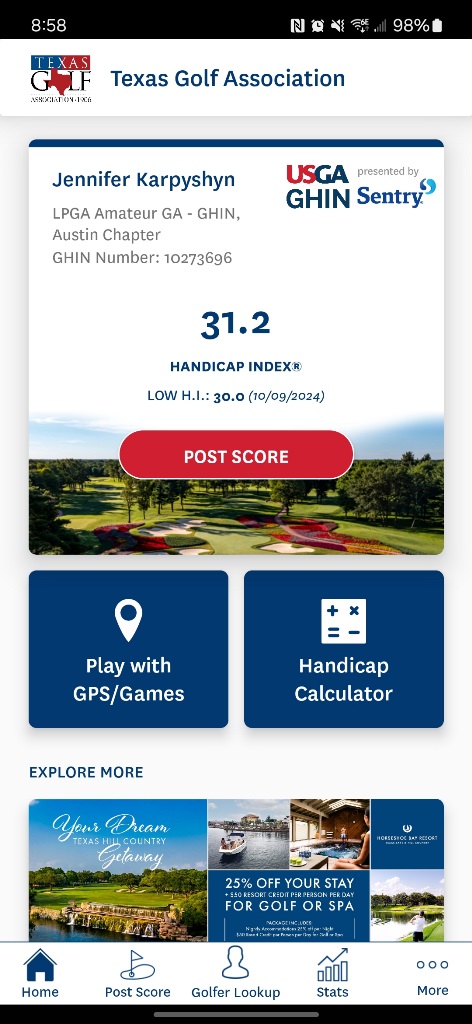
The second step is to choose the course, and then whether you want to enter your score Hole by Hole (with or without stats) or your Total Score. We always recommend entering your score Hole by Hole.
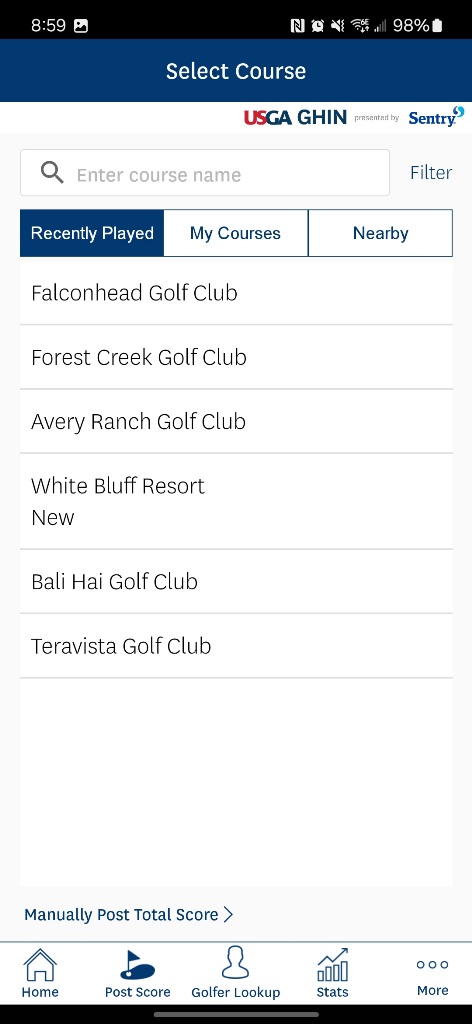
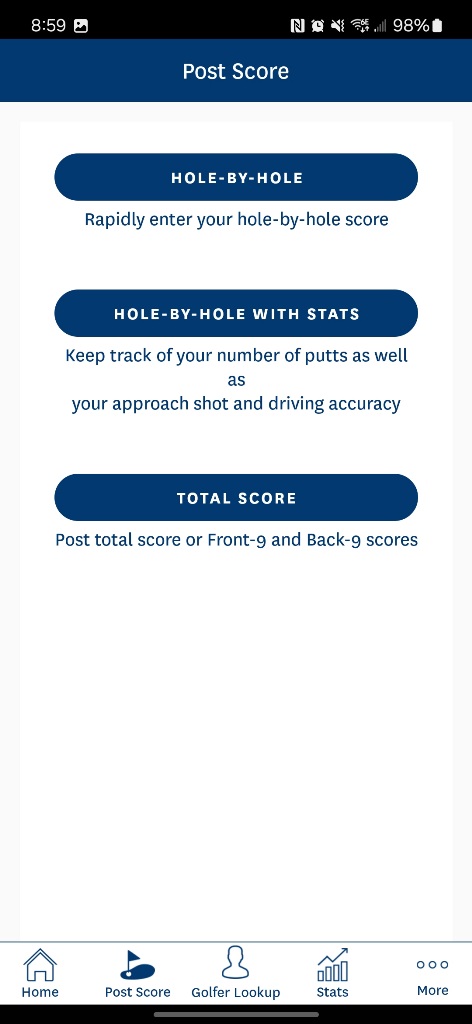
Next you will select whether you played 9 or 18 holes, the tees you played from, what hole you started on, whether you were playing on your home course (if you have one) or a different course or in a competition, and the date you played. Your handicap index updates every day so it is important that you enter your score on the day you played to keep it accurate. There is also an adjustment that will be made for extreme weather so if you happen to play during a hurricane your score will reflect that. Now choose Enter Hole by Hole Score.
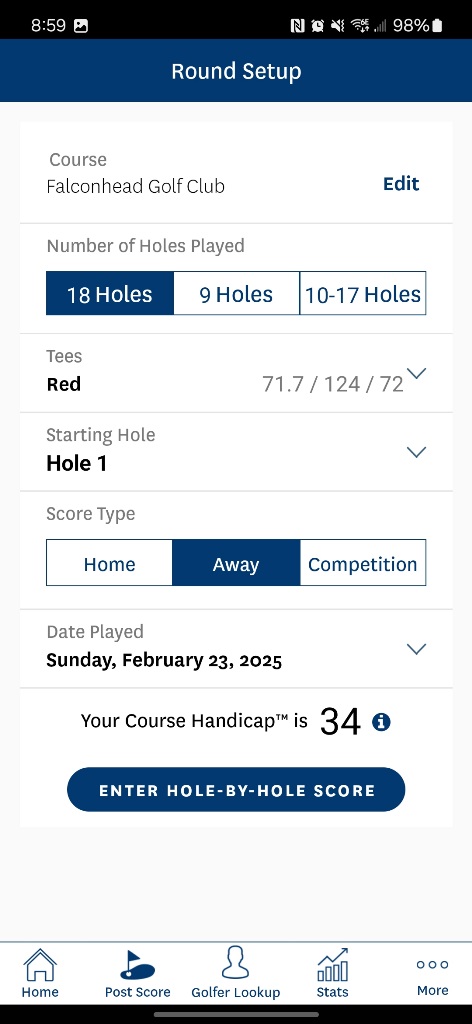
Tap on the Score box under Hole 1 to enter your score on that hole. The maximum score you can take on any hole when you don't have a handicap is par + 5. If your score was higher than that the app will automatically adjust it to the max score (for example Hole #3 was automatically adjusted down because it exceeded the max score for that hole. More about max scores in the next section.) This is important to remember when you are worried about keeping the pace during a round of golf, any score above par + 5 will not matter for your handicap so you might as well pick up and move on to the next hole. (Note this does not apply if you are in a tournament, you must finish every hole no matter what your score is.) Once you have your score entered on the first hole it will move to the next hole automatically. You can see the total score is also calculated automatically. Enter all of your scores and then tap Post Score.
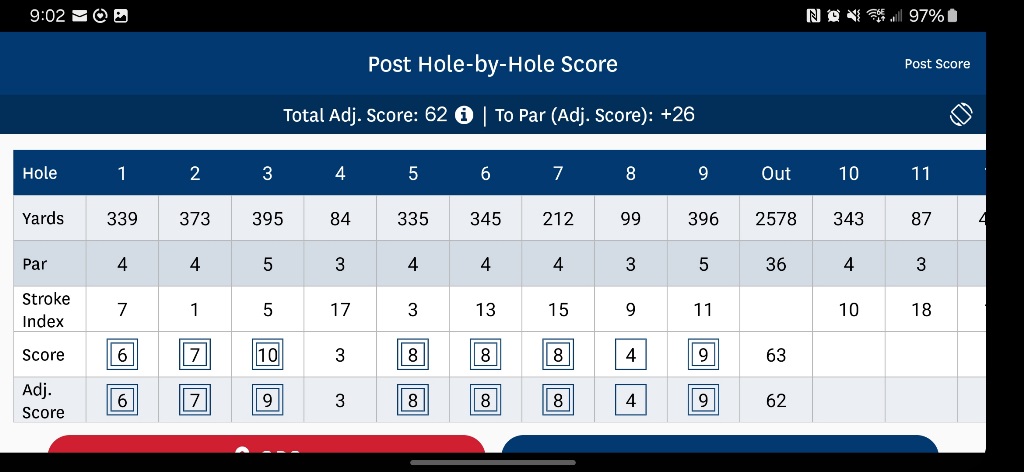
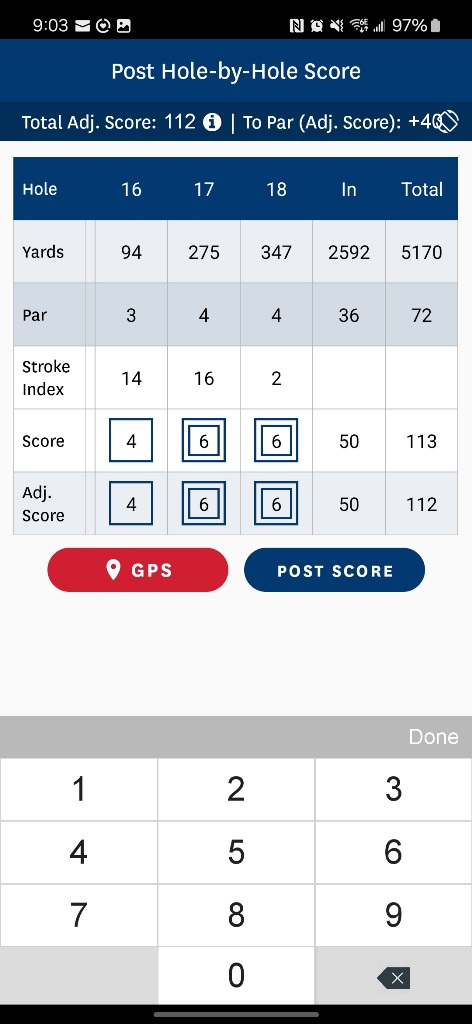
The handicap will not be updated until the next day. Once you have entered scores for 54 holes you will get a handicap index. It is important to enter both 9-hole and 18-hole rounds of golf every time you play. Your handicap index is based on the best 8 18-hole rounds of the last 20 that you played, so one bad round will not affect your handicap. The scores with the asterisk are the ones being used to calculate the handicap. The app will automatically combine 2 9-hole rounds into 1 18-hole round to be used in the handicap calculation, even if it is 2 front 9's played on the same course or 2 9's on completely different courses.
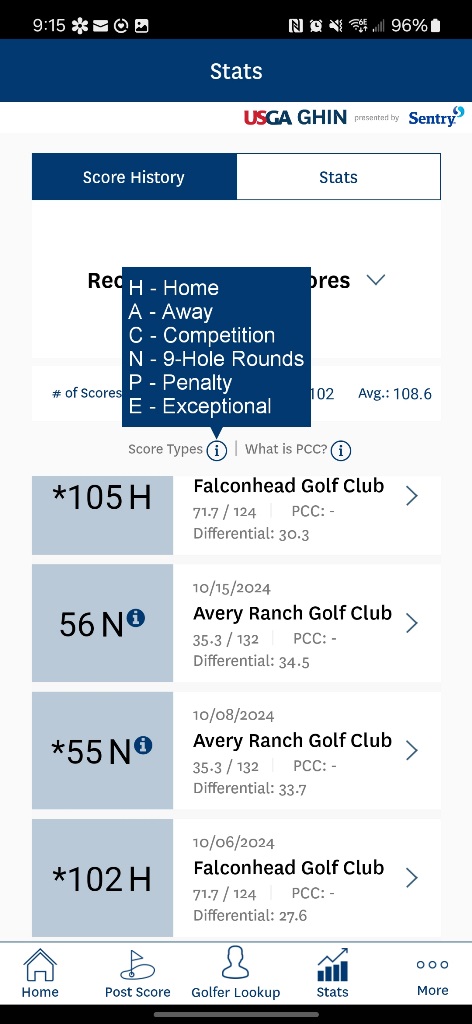
I have a Handicap Index, Now What?
In Part 1 we talked about how to establish your Handicap Index by entering your scores into GHIN. Once you have entered scores for 54 holes, you will see your Handicap Index in your profile on the app. As you enter more scores you should see your Handicap Index move down as you improve your game. The Handicap Index is a representation of your potential scoring ability and is always taken to one decimal place. So if your handicap index is 24.3 it generally means you will shoot 24 strokes over par on an average golf course (in other words 24+72=96).
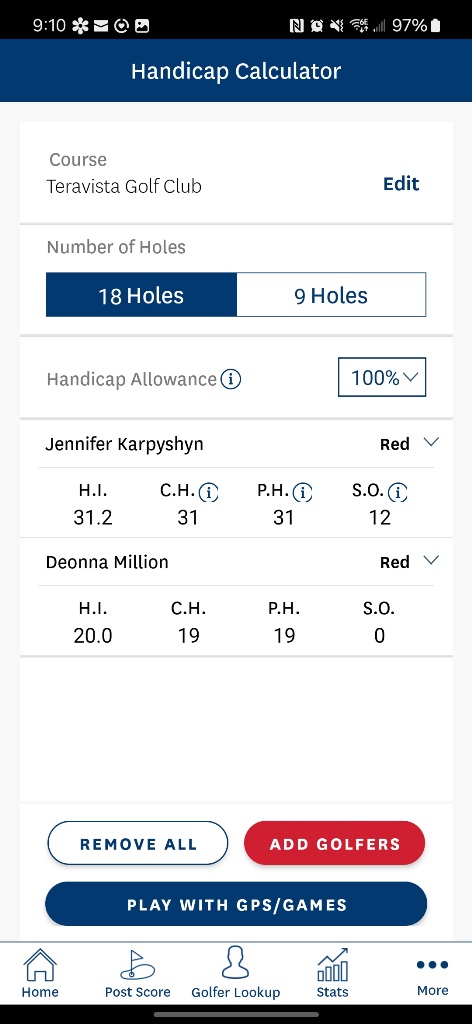
Another way to find out your course handicap is to pretend you are going to play that course and tap Post a Score. When you choose the course and tee box you are playing, you will see Slope (71.7)/Rating (124)/Par(72) and your Course Handicap below (34)
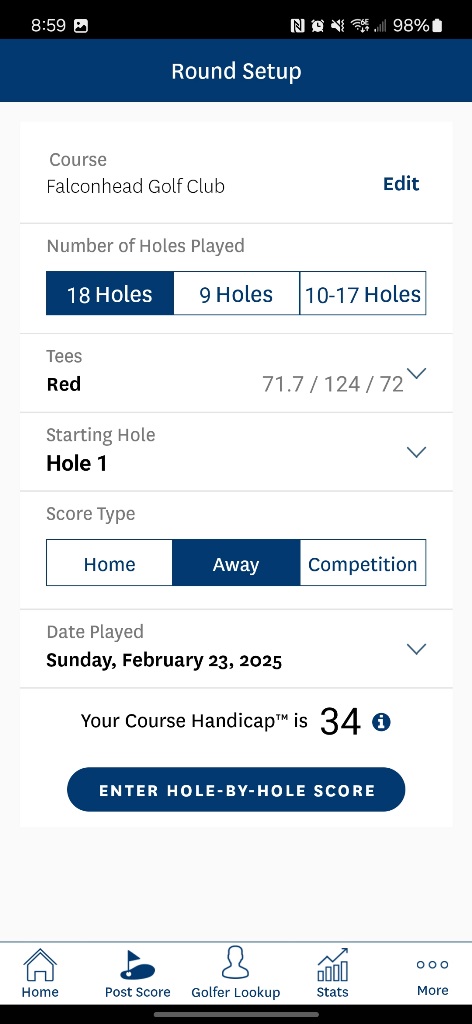
Max Scores
In Part 1 we talked about how to establish your Handicap Index by entering your scores into GHIN. In Part 2 we talked about how to find out your Course Handicap. Now it's time to talk about Maximum Scores, what they mean and how to figure them out.
What are Max Scores?
First did you know that every hole on a golf course is rated on its difficulty compared to the other holes on the course? This is called the handicap of the hole. If you look at the scorecard below you will see every hole has a yardage, a handicap and a par. So Hole 1 is 339 yards long from the red tees, it is the 7th hardest hole on the course, and it is a par 4. (The hardest hole has a handicap of 1, and the easiest hole has a handicap of 18.) Note that on this particular course some of the holes from the red tees have a slightly different handicap than the other tees. For example Hole #4 is the 17th hardest hole from the red tees, but only 15th hardest from the white, blue, gold and black tees.
So what is the Maximum Score on a hole? It is defined as "net double bogey" or in other words Par +2 +(or -) handicap strokes. Your Course Handicap can be broken down on a hole by hole basis so you know how many "free" or extra strokes you get on every hole. It makes sense that you get strokes on the hardest holes on the course first. At Falconhead my course handicap is 26, so I get 26 free strokes over 18 holes. This means that I get 1 stroke on every hole, and then on the 8 hardest holes I get an extra stroke (because 18+8=26). This is represented by the little dots in the upper right hand corner for every hole. Now I can figure out manually what my Maximum Score is on every hole. On hole 1 it will be an 8 because its a par 4 and I get 2 strokes (4+2+2=8). On Hole 2 it is also an 8. On Hole 3 it is a 9 because its a par 5 and I get 2 strokes (5+2+2=9). On hole 4 it is only a 6 because I only get 1 stroke because it's an easy hole (handicap 17 means its the second easiest hole on the course). 3+2+1=6. Luckily when we post our hole by hole scores in the GolfNet app, it will calculate your Maximum Score and make an adjustment if you forget and go over your Maximum Score on any hole.
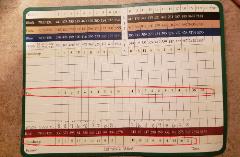
If you have any questions please reach out to our handicap chair Melinda Hipp




